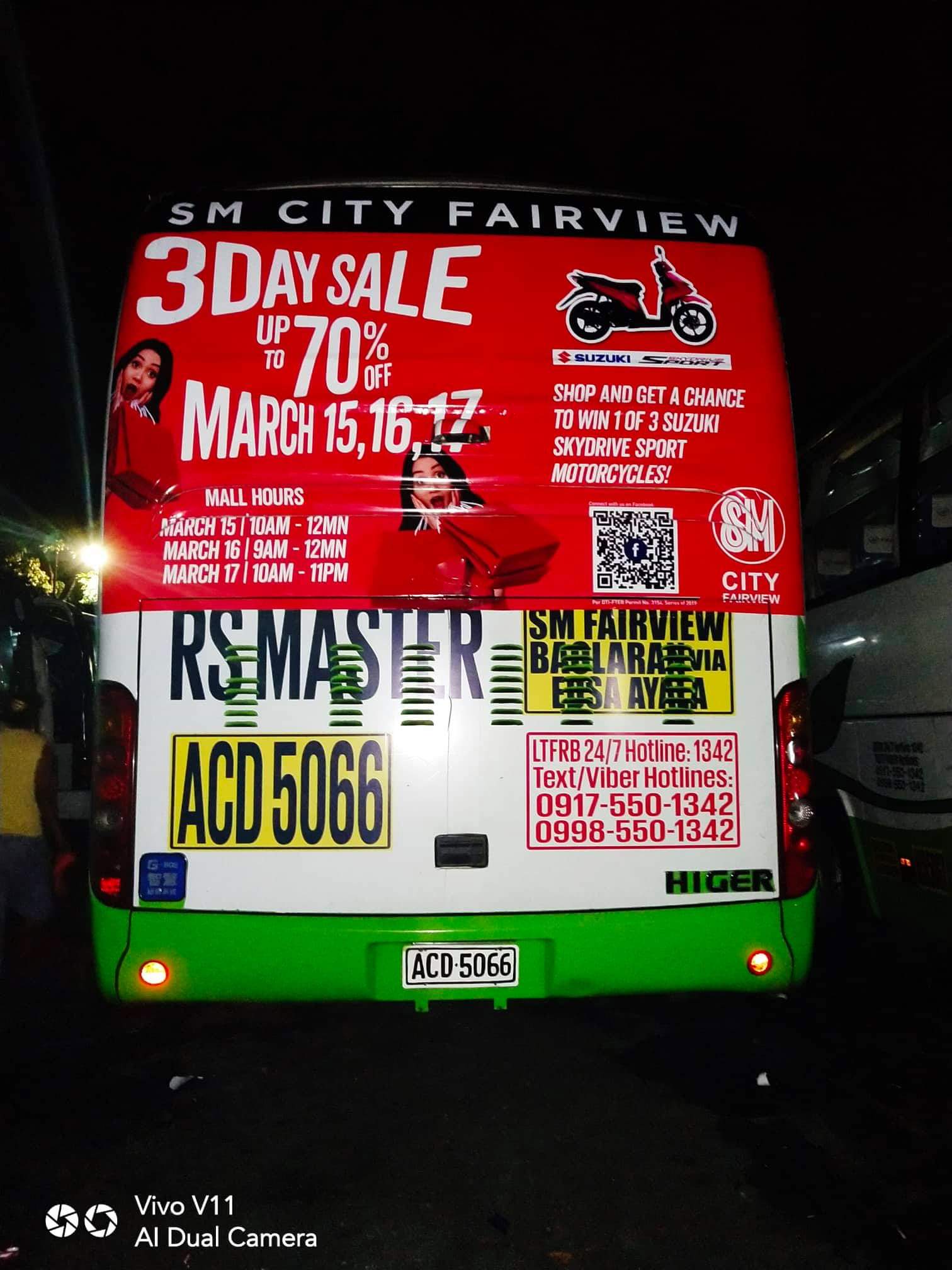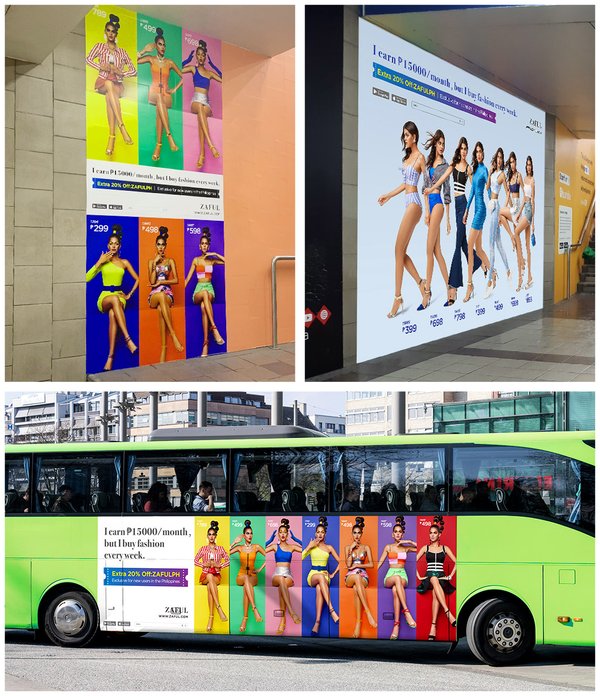Transit Advertising Philippines: An Ingenious Means to Advertise
Transit Advertising Philippines: An Ingenious Means to Advertise
Blog Article
Understanding the Function of Transit Marketing in Enhancing Brand Presence and Customer Engagement
Transportation advertising and marketing has emerged as a pivotal aspect in the advertising and marketing landscape, supplying unique chances for brand names to boost their presence and involve consumers effectively. With the capability to get to a diverse and restricted audience during their everyday commutes, these advertising techniques are not simply regarding visibility; they are about developing meaningful links with possible customers. As we check out the diverse benefits and innovative strategies within transit advertising, it comes to be necessary to think about exactly how these aspects collectively affect consumer assumption and actions, raising concerns about their long-term influence on brand commitment.
Interpretation of Transit Marketing
Transportation advertising and marketing describes the method of promoting products, solutions, or brands via promotions placed around public transportation systems. This form of advertising and marketing includes a selection of positionings, including posters on trains and buses, digital screens at transportation terminals, and wraps on the exterior of automobiles. It aims to get to a diverse target market, profiting from the high foot traffic connected with public transit.
Transportation marketing is purposefully placed to catch the attention of commuters, that frequently invest substantial time traveling or waiting. By incorporating promotions into the everyday routines of individuals, brand names can produce a long lasting impact and foster brand name recognition. The tool is particularly efficient in city environments, where mass transit is a primary setting of traveling.
In addition, transportation advertising and marketing can promote local targeting, enabling companies to reach details demographics based upon transit routes and station areas. As metropolitan populations expand and the usage of public transportation boosts, this advertising and marketing method has obtained importance as a vital part of incorporated marketing techniques. The dynamic nature of transit advertising, incorporated with its capacity to engage customers in a restricted environment, emphasizes its relevance in modern advertising practices.
Benefits of Transportation Advertising
The effectiveness of transit advertising hinges on its capacity to supply a wide variety of benefits to brands seeking to enhance presence and involvement. Among the main advantages is the comprehensive reach it uses; transit ads can effectively target varied demographics throughout urban areas, reaching both pedestrians and travelers alike. This broad direct exposure significantly increases brand recognition.
Another benefit is the high regularity of impressions. As transportation cars take a trip along recognized paths and stop at numerous places, they create repeated direct exposure that enhances brand name messages. This frequency cultivates familiarity, which is important in customer decision-making.
Transit marketing is also affordable contrasted to various other media systems. Offered its expansive reach and potential for high impressions, brand names usually experience a reduced expense per thousand perceptions (CPM), maximizing their advertising budget plan.
Additionally, transit advertisements can create a sense of neighborhood connection. By straightening with local transportation systems, brand names can resonate with regional audiences and cultivate a feeling of regional pride. This localized method boosts brand loyalty and engagement, making transportation advertising a compelling choice for organizations aiming to solidify their presence in the market.

Effective Strategies for Transit Projects
To make best use of the impact of transportation campaigns, brands need to utilize tactical preparation and execution customized to their target audience. Initially, identifying the market attributes of the audience using public transportation is crucial. This enables brands to develop tailored messaging that reverberates with possible customers.
Following, selecting the right transit tools is essential. Whether using bus wraps, subway posters, or electronic screens, each medium has unique advantages that can enhance presence. For example, lively visuals on bus wraps can stand out, while digital ads can be upgraded regularly to reflect timely promos.
In addition, integrating a cohesive branding method across transportation platforms makes sure uniformity and enhances the brand's identification. Utilizing unforgettable taglines and distinctive designs will certainly strengthen brand name recall amongst commuters.
Last but not least, timing is a key consider performing visit our website effective transit projects. Launching projects during top traveling hours or neighborhood events can considerably raise visibility and involvement. By employing these strategies, brand names can effectively harness the capacity of transportation advertising, cultivating higher recognition and link with their target market. Ultimately, a well-executed transit project can drive significant growth in brand name exposure and consumer involvement.

Measuring Influence and Involvement
In assessing the performance of transit marketing campaign, accurate dimension of influence and involvement is important for brands seeking to enhance their marketing approaches. Metrics such as reach, frequency, and impressions supply fundamental data to assess presence. Examining these variables assists identify the amount of prospective clients are exposed to the advertisements during their daily commutes.
Interaction can be further evaluated through customer interactions, such as web site traffic, social media states, and straight feedbacks to calls-to-action featured in the advertisements. Utilizing devices like QR codes or unique URLs can facilitate tracking of customer habits directly linked to transit campaigns. Surveys and responses devices likewise work as beneficial methods to collect qualitative data on consumer assumptions and recall of the promotion.
Moreover, progressed analytics and attribution versions can associate transportation direct exposure with succeeding acquiring behavior, providing insights right into the return on investment. By employing a detailed approach that integrates quantitative and qualitative steps, brands can establish a nuanced understanding of their transportation marketing effect. Ultimately, this data-driven strategy allows brand names to refine their projects, guaranteeing they reverberate efficiently with target audiences and boost total brand presence.
Case Research Studies of Successful Campaigns
Successful transit ad campaign work as compelling instances of how efficient strategies can boost brand exposure and involvement. Transit Advertising Philippines. One remarkable case is the "I Love New York" project, which transformed the city's photo and attracted numerous visitors. By utilizing train ads, signboards, and bus wraps, the project produced a strong, cohesive brand name identity, resulting in a substantial uptick in tourism and regional organization patronage
Another exemplary campaign is Coca-Cola's "Share a Coke" campaign, which leveraged transit advertising to individualize the brand name experience. By featuring prominent names on marketing materials throughout numerous transit platforms, Coca-Cola promoted a much deeper emotional connection with consumers, encouraging them to share their experiences on social networks.
Furthermore, the "Got Milk?" project properly used public transport ads to reach a wide audience, enhancing the message of the value of milk in a well balanced diet plan. The campaign saw a measurable boost in milk consumption in target demographics.
These case research studies show that when carried out thoughtfully, transit marketing can dramatically improve brand presence, foster consumer interaction, and drive quantifiable results, demonstrating its vital function in contemporary advertising methods. - Transit Advertising Philippines
Conclusion
In verdict, transit advertising and marketing serves as a vital device for enhancing brand exposure and cultivating consumer involvement. By using purposefully placed ads within mass transit systems, brands can successfully reach varied audiences and enhance acknowledgment via consistent exposure. The execution of targeted messaging and innovative techniques even more magnifies important link the effect of transit campaigns. Eventually, the capacity to measure interaction and evaluate effective study underscores the performance of transportation advertising in driving brand loyalty and customer communications.
Transit advertising has arised as an essential element in the advertising landscape, supplying distinct chances for brand names to boost their presence and engage consumers efficiently.Additionally, transit advertising can assist in localized targeting, enabling services to reach particular demographics based on transportation routes and his response terminal places.In examining the efficiency of transportation marketing campaigns, exact measurement of influence and interaction is important for brands looking for to maximize their marketing approaches.Effective transit marketing projects offer as engaging examples of exactly how reliable techniques can elevate brand name visibility and engagement.In final thought, transit advertising serves as an essential tool for boosting brand exposure and cultivating customer engagement.
Report this page